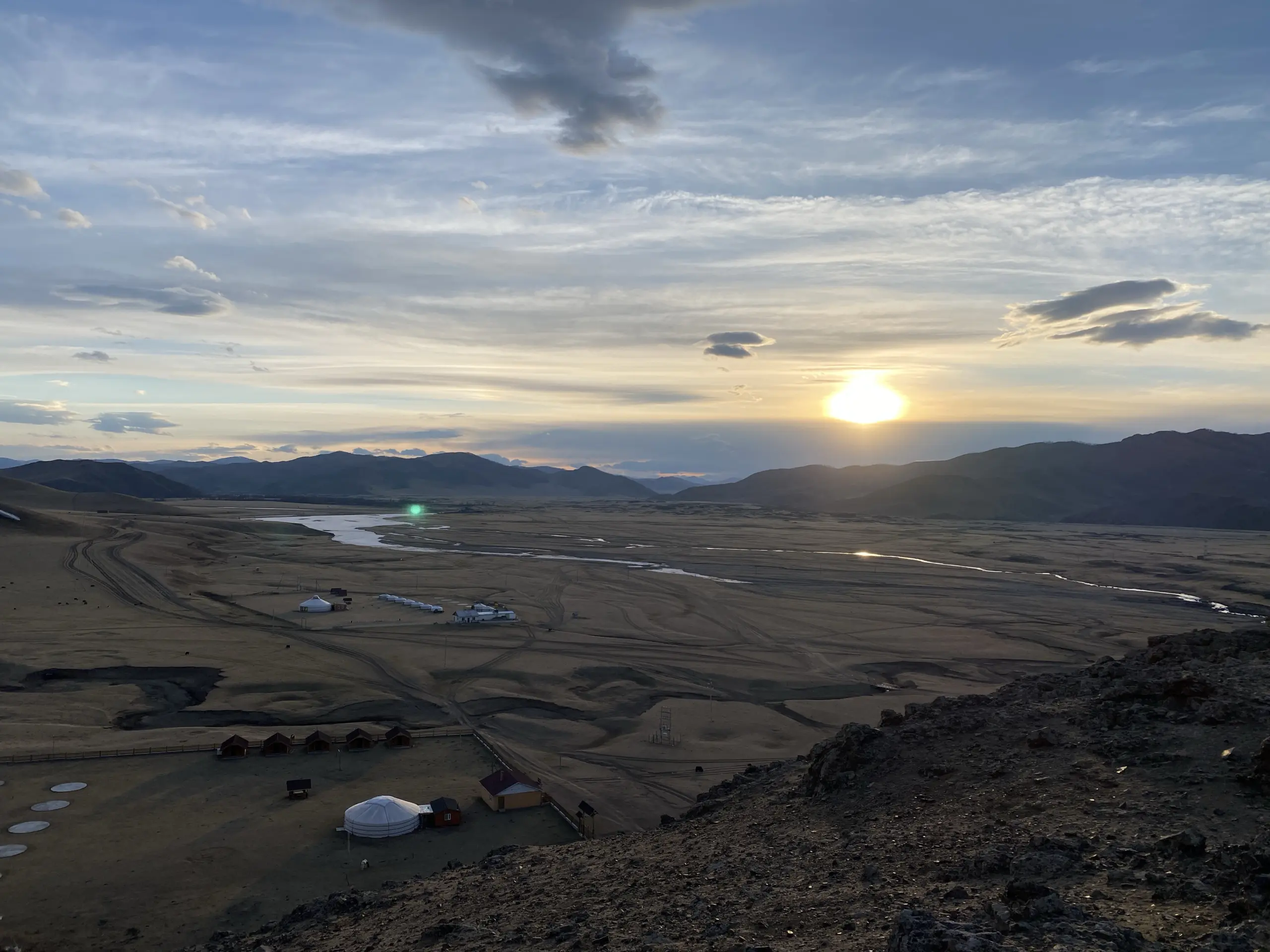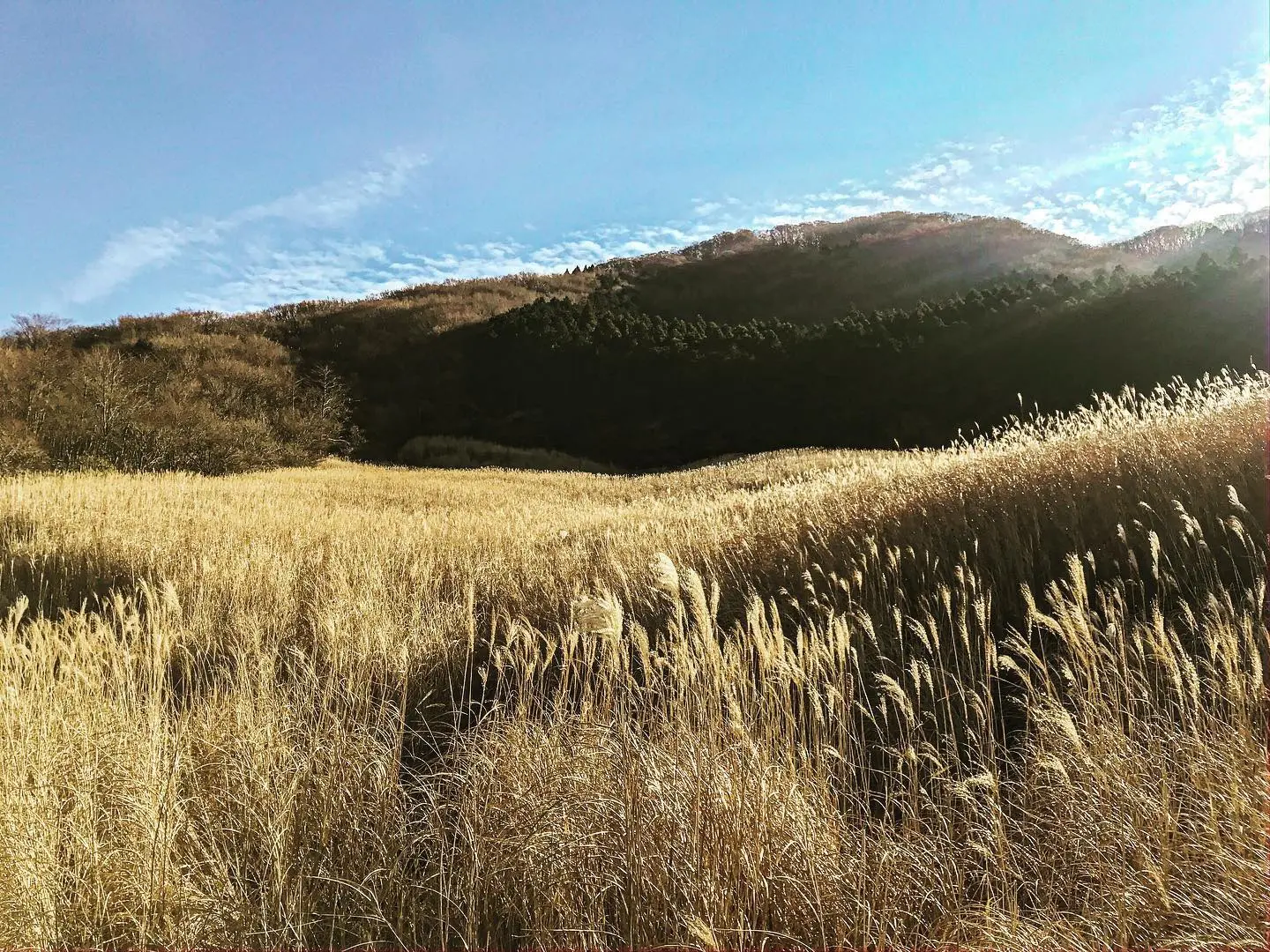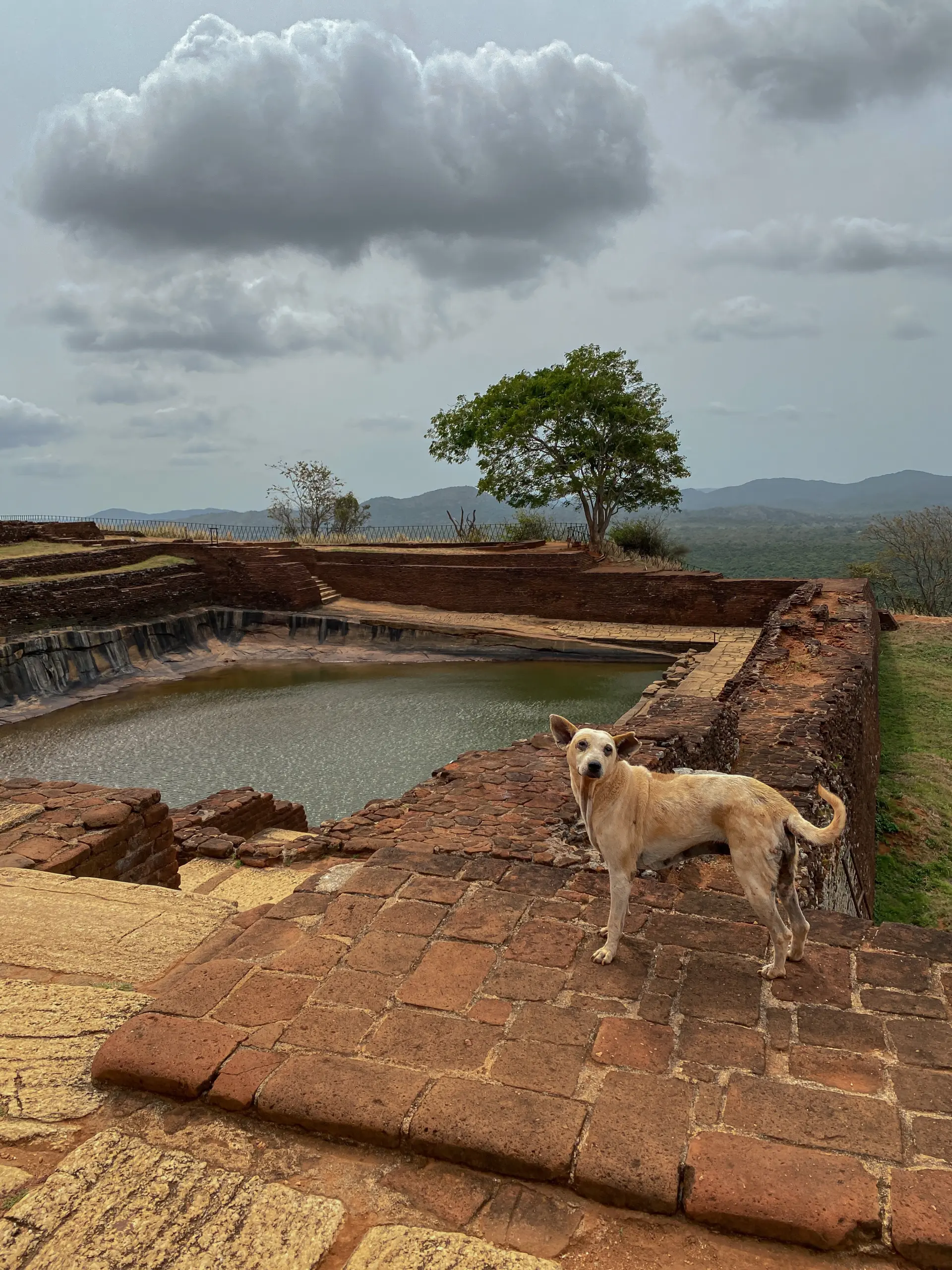Whispers of time echo through the sands of Cairo.
A city where ancient wonders meet the pulse of modern life.
Standing tall as the guardian of millennia-old secrets, Cairo invites you, the curious, to journey into the where it all started: Ancient Egypt.
Mysteries, wrapped in enigmas, beckon from every corner, and stories of pharaohs and fabled treasures wait to be rediscovered.
So, why visit Cairo? Because here, history doesn’t just speak—it comes alive.
Cairo is the beginning of your timeless story.
Table of Contents
Toggle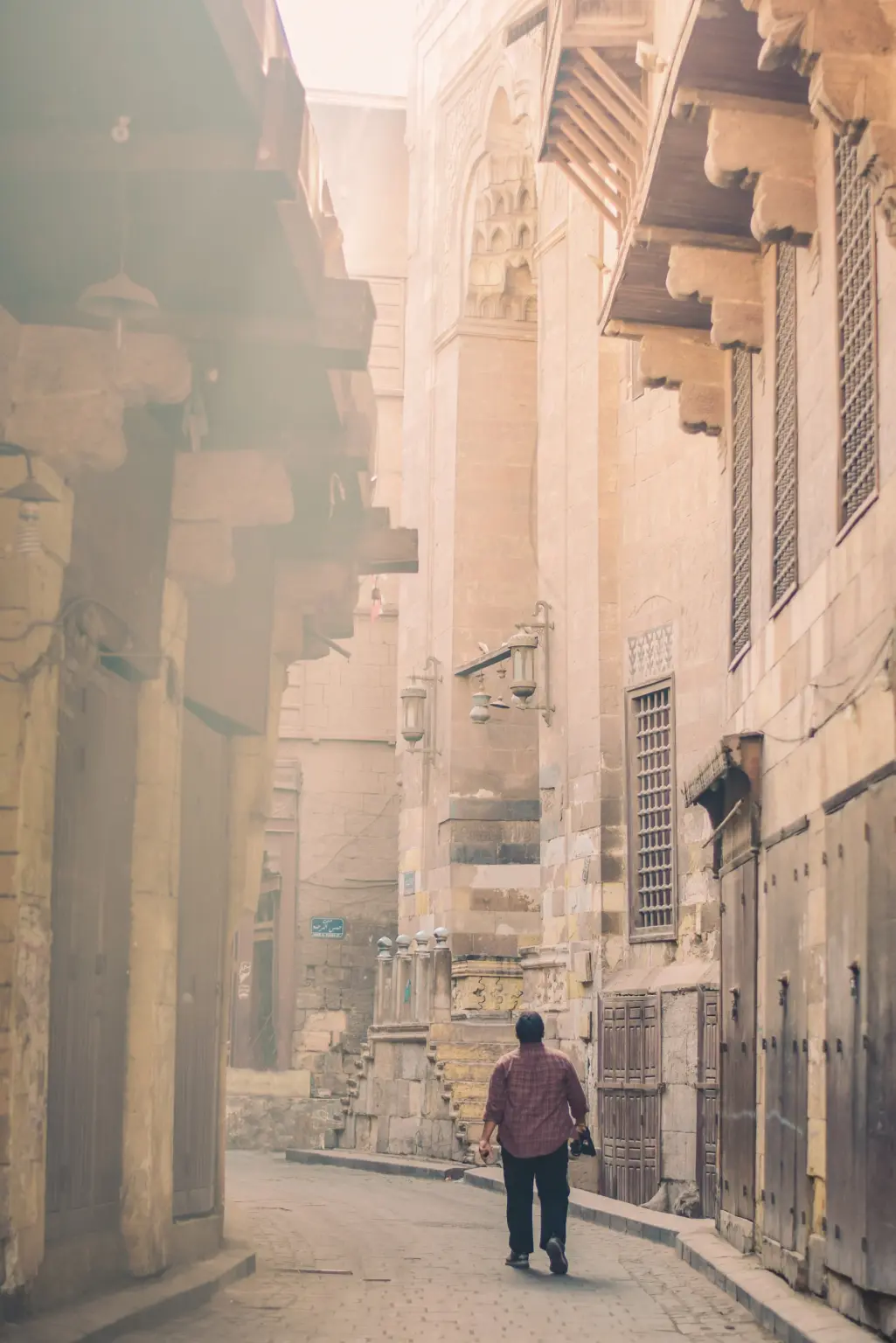
History of Cairo
At the crossroads of ancient civilizations, Cairo emerged as a city of significance, deeply rooted in the annals of history.
Cairo, known in Arabic as Al-Qahirah or “The Victorious,” has been the epicenter of momentous historical events that have shaped not only Egypt but the wider world.
Its origins are deeply entwined with the rise of the Fatimid dynasty in the 10th century. These Shia Muslim rulers, establishing their new capital, infused the city with grandeur, building monumental structures and libraries that attracted scholars from all corners.
But Cairo’s timeline didn’t start there. Beneath its modern streets lie remnants of older capitals, such as the city of Memphis, which dates back over 4,000 years to the times of the pharaohs. Over the millennia, the city evolved, absorbing influences from the Romans, Byzantines, Arabs, and Ottomans, each leaving an indelible mark on its character.
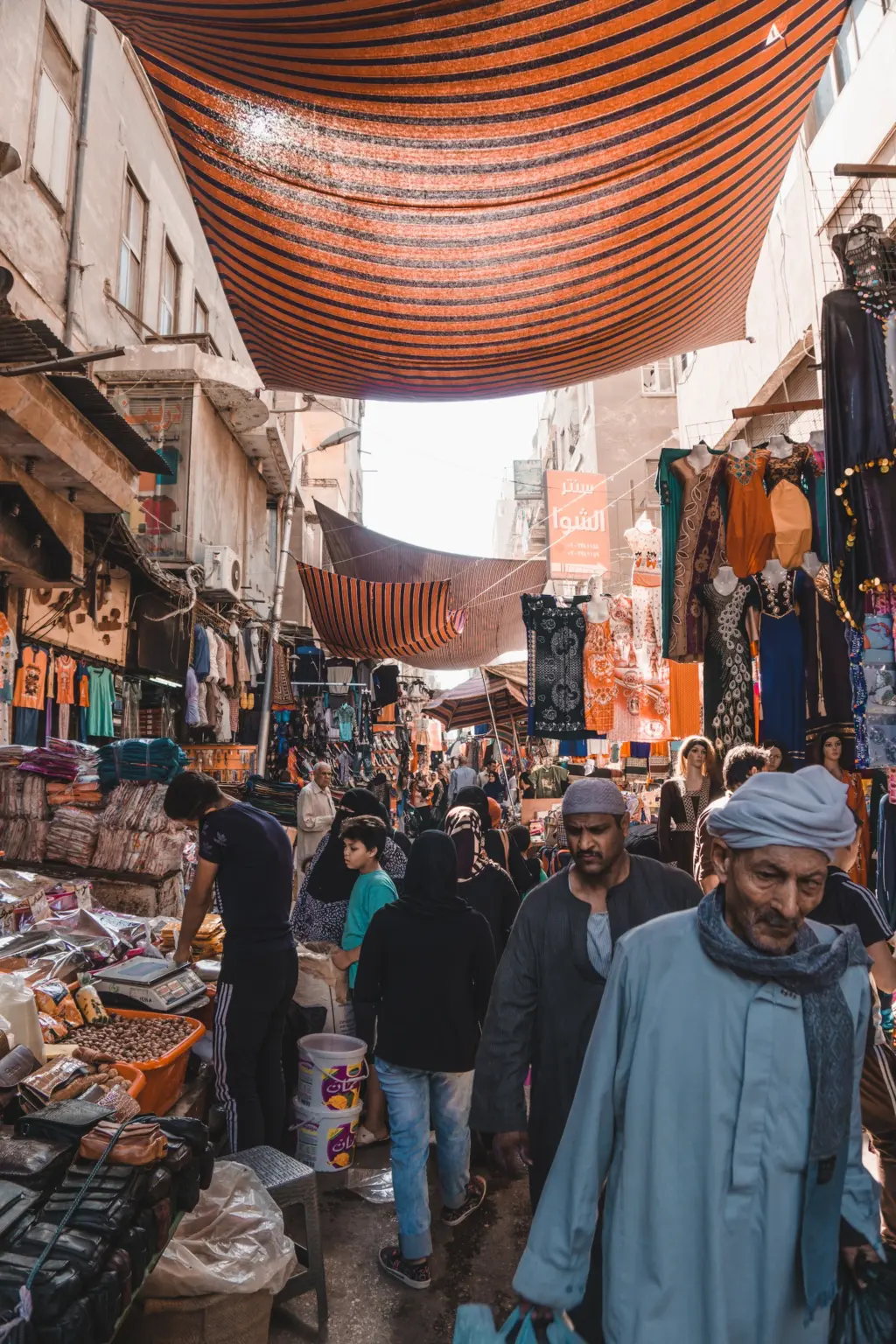
Egyptian Culture Overview
The official language of Egypt is Arabic, with the Egyptian dialect being the most prevalent among its various forms. This dialect not only sets Egypt apart in the Arab world but has also heavily influenced other Arabic dialects due to Egypt’s prominent role in Middle Eastern cinema and music (Did you know: Egypt was known as the “Hollywood of the Middle East”?)
While Arabic plays a central role in modern Egyptian identity, Coptic, primarily used by the Christian minority in religious contexts, holds historical importance. This ancient language traces its roots back to the Pharaonic era and offers a linguistic bridge to Egypt’s ancient past.
Culinary traditions in Egypt offer a rich blend of flavors, with dishes like koshari (my favorite) and ful medames being staple comfort foods.
For an even more comprehensive exploration, dive into my blog post on Egyptian culture.
Best Places to Visit in Cairo
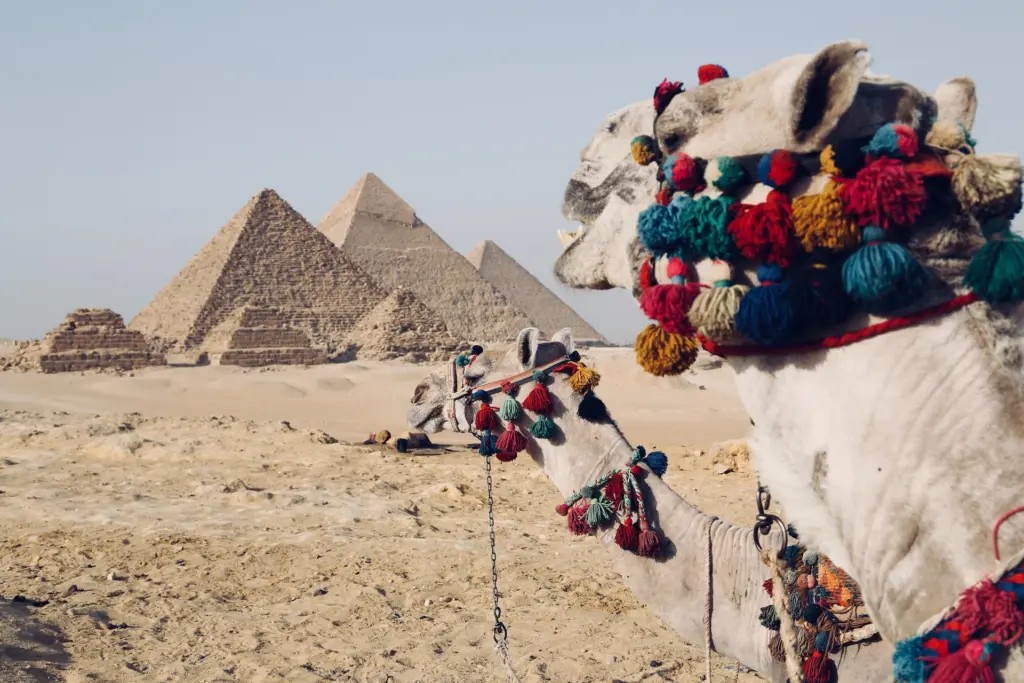
1. Pyramids of Giza
The Pyramids of Giza are undeniably the crown jewels of Egypt.
Comprising the Great Pyramid of Khufu, the slightly smaller Pyramid of Khafre, and the comparatively modest Pyramid of Menkaure, this trio has held the world’s fascination for thousands of years.
The Great Pyramid of Khufu, the oldest and largest of the three, was originally 146.6 m (480 ft) tall, though now stands at 138.5 m (454 ft) due to the loss of the outer casing stones. It was the tallest man-made structure in the world for over 3,800 years and is the only remaining wonder of the original Seven Wonders of the Ancient World.
Remarkably precise in its construction, the pyramid’s sides are aligned with the cardinal points of the compass, and it’s estimated that around 2.3 million blocks of stone, each weighing an average of 2.5 tons, were used in its construction.
If you want to learn more, check out the Secrets of the Giza Pyramids.
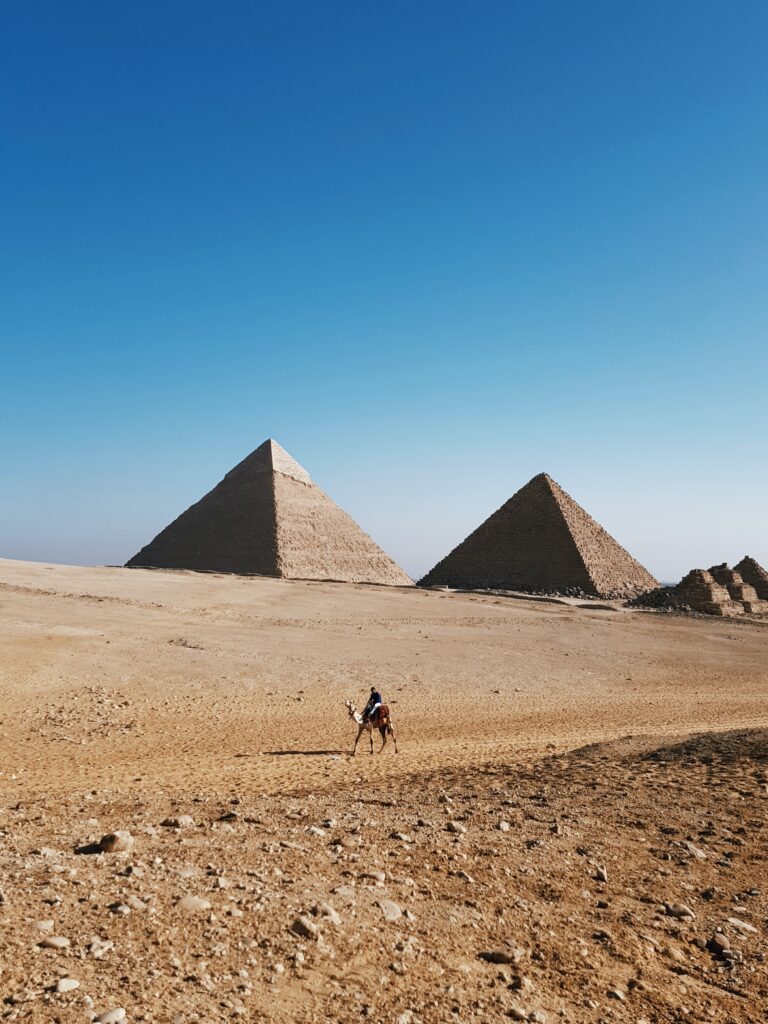
2. Giza Necropolis
While the Pyramids and the Sphinx often steal the limelight when it comes to the Giza Necropolis, the area is teeming with other historical wonders that deserve equal attention.
Located near the Great Pyramid, the Solar Boat Museum houses the Khufu ship, an intact full-sized vessel from Ancient Egypt that’s around 4,500 years old. Discovered in 1954, this cedar-wood boat is believed to have been built for Pharaoh Khufu.
Meanwhile, the expansive Western Cemetery was where the elite and high-ranking officials of the Old Kingdom were laid to rest. It is home to numerous tombs, many of which boast intricate carvings and detailed wall paintings. Including the Mastaba of Seshemnufer IV, as one of the most impressive private tombs in the Giza plateau, which belonged to a high-ranking official during the 6th dynasty.
There’s also the Tomb of Queen Khentkaus I, sometimes referred to as “The Fourth Pyramid,” it’s an intriguing structure that blends elements of both pyramidal and mastaba architecture.

3. Great Sphinx of Giza
The Great Sphinx of Giza stands guard near the Pyramids, merging the strength of a lion with the wisdom of a pharaoh. Carved from a single limestone ridge, it is one of the most iconic and mysterious monuments of ancient Egypt.
Measuring about 73 m in length, 20 m in height, and 19 m in width (239 ft – 65 ft – 62 ft), the Sphinx represents an astonishing feat of ancient sculpture. Its outstretched paws and regal face, featuring a traditional pharaonic headdress, are oriented towards the rising sun, possibly symbolizing the sun god Ra, with whom it was closely associated.
And if you’ve ever heard of the tragic Tale of Oedipus, you would know the Sphinx is quite fond of its riddles.
You can join a highly-rated tour to the Pyramids of Giza and the Sphinx through here.

4. The Egyptian Museum
Formally known as the Museum of Egyptian Antiquities, The Egyptian Museum is a treasure trove that houses an extensive collection of ancient Egyptian artifacts, making it one of the world’s most important repositories of antiquities.
Spanning over two main floors, the museum contains more than 120,000 items, many of which are on display, while others are held in storerooms. While exploring the museum, you’ll come across plenty of ancient symbols. One of the most enigmatic symbols is the Eye of Horus. Curious about its story? Dive into a detailed exploration of both the Eye of Horus and the Eye of Ra.
Among its most celebrated exhibits is the Tutankhamun collection, which includes the young pharaoh’s solid gold death mask, often regarded as the museum’s piece de resistance. Discovered in 1922 by British archaeologist Howard Carter. Another prolific symbol you might encounter when visiting the tombs is the Ankh, also known as the “Key of Life”.
Additionally, the museum boasts an extensive mummy collection in its Royal Mummy Room, where the remains of many prominent pharaohs, including Ramses II and Queen Hatshepsut, are preserved. The process of mummification, the beliefs associated with the afterlife, and the significance of burial rituals are insightfully depicted through these well-preserved remains.

5. Citadel of Saladin
The Citadel of Saladin, or Cairo Citadel as it’s commonly known, is perched atop the Mokattam hill, and offers panoramic views of the city and the Pyramids of Giza in the distance.
Built in the 12th century by the Ayyubid ruler Salah ad-Din (Saladin) as a defensive fortress against the Crusaders, the Citadel has played a pivotal role in Egypt’s history for centuries.
It has been the residence of Egypt’s rulers for over 700 years!
Don’t miss the Mosque of Muhammad Ali, also known as the Alabaster Mosque because of its extensive use of this material. Built between 1830 and 1848, its Ottoman-inspired architecture, dominated by its twin minarets and a central dome, is a departure from the predominantly Mamluk architectural style of Cairo.
The Citadel also houses several museums. The Military Museum traces Egypt’s military history, highlighting weapons, uniforms, and other wartime artifacts. The Police Museum, on the other hand, delves into the history of policing in Egypt.
You can join a super popular tour that explores the Citadel and much of Old Cairo through here.

6. Prince Mohamed Ali Palace
The Prince Mohamed Ali Palace is a harmonious blend of Ottoman, Moorish, Persian, and European architectural styles, capturing the eclectic taste of its founder and the era in which it was built.
Commissioned in the early 20th century by Prince Mohamed Ali Tewfik, the younger half-brother of King Farouk, the palace complex was envisioned not just as a residence but as a living embodiment of art and culture. Spread across 6.2 hectares, the estate includes a palace, hunting lodge, residences, gardens, and a museum.
A defining feature of the palace is its extensive use of fine woodwork, exquisite ceramics, and stained glass. As you wander through the rooms, you’re greeted by intricate wooden ceilings, handcrafted tiles, and ornate chandeliers, reflecting the prince’s personal aesthetic and his passion for art collecting.

7. Coptic Cairo
Coptic Cairo captures a snapshot of Egypt’s Christian history, its roots tracing back to the earliest days of Christianity.
This ancient quarter is home to a concentration of Christian churches, most of which were built atop even older places of worship. One of the most iconic structures is the Hanging Church, or Saint Virgin Mary’s Coptic Orthodox Church.
Built atop the Roman Fortress of Babylon’s old gatehouse, the church appears as though it’s “hanging” above the ground, hence its name.
Adjacent to the Hanging Church is the Coptic Museum, which boasts an impressive collection of Christian Egyptian art. Its artifacts span from the Greco-Roman period to the Islamic era, revealing the evolution of Coptic art and the fusion of cultures that shaped it.
Another noteworthy site is the Church of St. Sergius and Bacchus, which is believed to be constructed over a cave where the Holy Family took refuge during their flight to Egypt. The church still maintains its original shape and structure to this day!
Further adding to the district’s spiritual landscape is the Ben Ezra Synagogue, reflecting the once-thriving Jewish community in Cairo. Legend holds that the synagogue stands on the site where the baby Moses was found by Pharaoh’s daughter.

8. The Grand Egyptian Museum
As one of the largest archaeological museums in the world, the Grand Egyptian Museum (often referred to as the GEM) has just recently opened on February 2023. It’s not to be mistaken with the aforementioned Egyptian Museum.
Designed with sweeping curves and a grand facade, the museum seems to elegantly merge the ancient and the contemporary. Plus, its position allows for a direct line of sight to the Pyramids.
The GEM is set to house over 100,000 artifacts, with at least 20,000 making their debut to the public for the first time. The exhibits will span the entirety of Egyptian history, from the pre-dynastic era to the Greco-Roman period.
A significant highlight of the museum will be the complete display of Tutankhamun’s tomb collection – more than 5,000 items. These artifacts will be showcased in an expansive space, arranged in the exact order they were discovered by Howard Carter in 1922.
Hidden Gems in Cairo

9. Al Moez Ldin Allah Al Fatmi
Al Moez Ldin Allah Al Fatmi Street, often simply referred to as Al Moez Street, winds its way through the heart of historic Cairo, spanning just over 1 km (0.6 mi), this thoroughfare is packed with historical gems, making it one of the densest concentrations of medieval Islamic landmarks in the world.
The street is named after Al-Mu’izz li-Din Allah, the fourth caliph of the Fatimid dynasty, who founded the city of Cairo in the 10th century.
Among the prominent structures is the Madrasa of Sultan Barquq, a splendid representation of Mamluk architecture with its intricately carved stonework and magnificent dome.
Another standout is the Bayt Al-Suhaymi, a historic residence that offers a window into the domestic lives of affluent Cairenes during the Ottoman period.

10. Bab Zuweila
As one of the three main gates of the medieval city of Cairo, the Bab Zuweila offers a glimpse into the grandeur of the Fatimid era and the successive dynasties that shaped the city’s destiny.
Constructed in the 11th century during the Fatimid reign, Bab Zuweila was more than just an entrance; it served as a formidable defensive structure. Over the years, it has played various roles, from a watchtower to a place of public executions.
The gateway is flanked by two imposing minarets, which belong to the adjacent Mosque of Sultan al-Mu’ayyad. I recommend climbing up the minarets to see views of the sprawling city below.

11. Qalawun Complex
Found on the Al Moez Ldin Allah Al Fatmi Street, the Qalawun Complex shows you the vision of Sultan Al-Nasir Muhammad Qalawun, who commissioned its construction in the late 13th century. This ensemble of buildings — comprises a mausoleum, madrasa, and maristan (hospital).
The Mausoleum of Qalawun, regarded as one of the most magnificent in Cairo, is a marvel of Islamic artistry. Its dome, a soaring structure with intricate patterns, can be easily discerned from various points in the city. The interiors, bathed in subdued light filtering through stained glass windows, are adorned with elaborate stucco work, marble mosaics, and Qur’anic inscriptions that dance along the walls in elegant Kufic and Thuluth scripts.
Perhaps the most intriguing component of the complex is the maristan. One of the first of its kind in the Islamic world, the Qalawun Hospital was a beacon of medical advancement. Built with the sultan’s vision of providing free healthcare to all, regardless of status or creed, the hospital was equipped with specialized wards, resident physicians, and even music therapy sessions for patients.
Top Things to Do in Cairo

12. Climb the Cairo Tower
Soaring 187 m (613 ft) into the Cairo skyline, the Cairo Tower, or “Borg Al-Qahira” as it’s known locally, offers an unparalleled panoramic view of the sprawling metropolis.
Constructed in the 1960s, the tower, located on Gezira Island in the River Nile, stands as the tallest structure in North Africa and has since become a prominent city landmark.
The tower’s intricate lattice design, inspired by the lotus plant, a symbol deeply rooted in ancient Egyptian culture, gives it a distinctive appearance.
This meshwork pattern, made from reinforced concrete, not only adds to the aesthetic appeal but also provides a cooling effect, essential in the region’s hot climate.
You can take an elevator ride to the observation deck, which offers a 360-degree vista of Cairo.An evening visit is highly recommended!
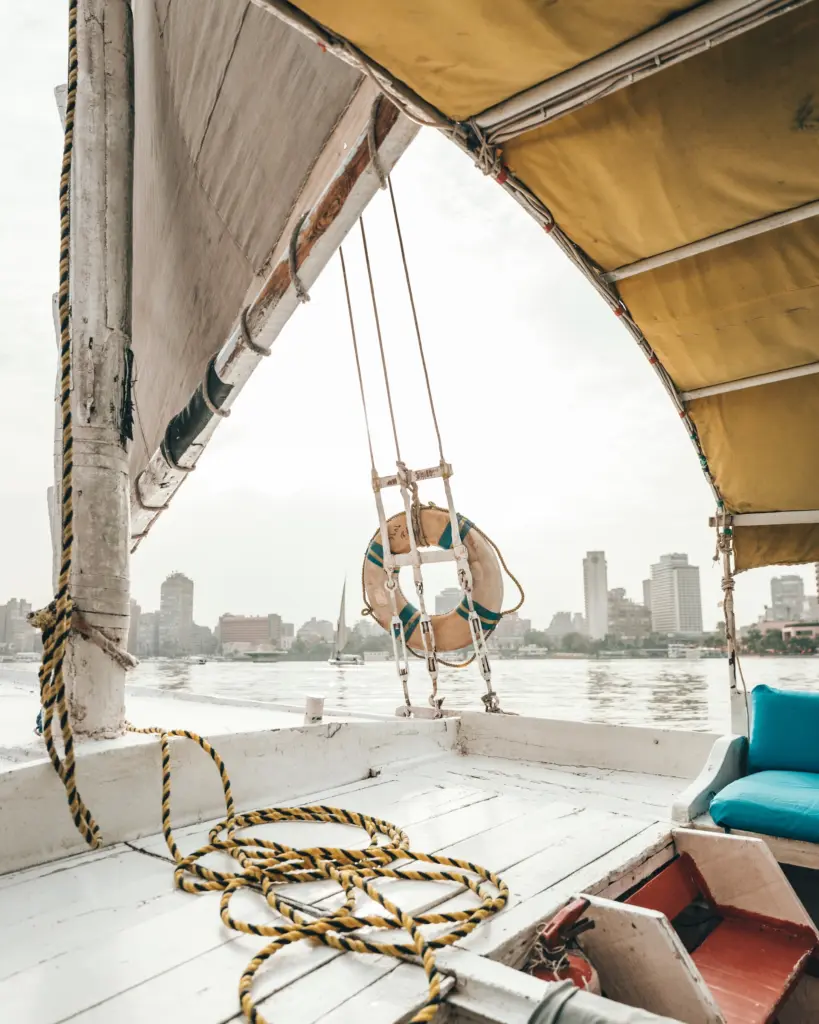
13. Ride a Felucca Boat on the Nile River
Few experiences in Cairo capture the essence of the city as intimately as a felucca ride on the Nile River.
Feluccas are traditional wooden sailboats that have graced the Nile’s waters for centuries!
As the felucca gently glides on the Nile’s shimmering waters, the cacophony of Cairo fades into the background, replaced by the soft lapping of water against the boat’s hull and the rhythmic creak of its wooden mast.
The Nile, often referred to as Egypt’s lifeline, has played a central role in the country’s history, culture, and economy. A felucca ride provides a tangible connection to this heritage.
Here’s an afforable 1 or 2 hour Felucca Ride that you can try out if you’re keen.

14. Haggle at Khan En Khalili Bazaar
Khan El Khalili is not just a bazaar; it’s a sensory extravaganza!
Dating back to the 14th century, this bustling market, with its narrow alleyways and intricately designed archways offers a shopping experience like no other.
From the moment you step into Khan El Khalili, the air is filled with the enticing aroma of spices, the clang of copperware, and the melodic call of shopkeepers advertising their wares.
The bazaar is also dotted with historical sites, like the magnificent Al-Hussein Mosque, and countless coffeehouses, where locals gather to sip on traditional tea and puff on shishas.
Fishawi’s, one of the oldest coffeehouses in Cairo, is a must-visit. With its mirrored walls, antique chandeliers, and an ambiance reminiscent of bygone eras, it’s the perfect spot to soak in the market’s ambiance.

15. Go Museum Hopping
While the Egyptian Museum and the Grand Egyptian Museum are often the star attractions, there are several other cultural institutions that offer equally fascinating insights into the country’s legacy.
One such place is the Museum of Islamic Art which houses one of the most comprehensive collections of Islamic art in the world. With over 100,000 artifacts, the museum showcases the artistic evolution of Islamic societies over 14 centuries.
Once the residence of the Egyptian royal family, Abdeen Palace is a sprawling edifice located in downtown Cairo.
Today, it serves as a museum, displaying a rich collection of artifacts from the 19th and 20th centuries. The palace’s ornate rooms showcase a wide array of historical items, from King Farouk’s collection of weapons and medals to lavish dining sets and ceremonial garments.

16. Relax at Al-Azhar Park
Amidst Cairo’s urban sprawl lies Al-Azhar Park, a literal oasis.
Covering an area of about 30 hectares, Al-Azhar Park was a gift from the Aga Khan Trust for Culture to the city of Cairo, with the intent of providing an eco-friendly space for relaxation and recreation.
What was once a mound of rubble accumulated over centuries transformed into a beautifully landscaped park, boasting meticulously manicured gardens, serene water features, and meandering pathways.
One of the park’s highlights is the Ayyubid Wall, a historic fortification dating back to the 12th century, which was uncovered during the park’s construction and has since been restored.

17. Check Out Wekalet El Ghoury
Wekalet El Ghoury is a callback to the city’s vibrant merchant history.
Built in the 16th century during the reign of Sultan Qansuh al-Ghuri, this caravanserai (merchant hostel) was once a bustling hub of trade, where merchants from distant lands converged to sell their wares and find shelter for the night.
The architecture of Wekalet El Ghoury is a prime example of Mamluk design. The stone facade, with its arches and ornate wooden mashrabiyas (latticed windows), hints at the grandeur that lies within.
Nowadays, they have the Tanwra Show being held in its vicinities every Saturday and Wednesday around 7 PM.

18. Visit the Many Mosques
There’s a reason why Cairo is dubbed as the “City of a Thousand Minarets,” with its plethora of mosques dotting the capital city’s skyline.
Al-Hakim Mosque is one of the oldest and most significant Fatimid mosques in Egypt. Commissioned by the Fatimid Caliph Al-Hakim bi-Amr Allah in the 10th century, the mosque is characterized by its imposing minarets and vast courtyard.
One of the oldest mosques in Cairo, the Mosque of Ibn Tulun is distinguished by its unique spiral minaret. Built in the 9th century, the mosque boasts a simple yet elegant design with its arcaded courtyard and wooden balconies.
There’s also the Blue Mosque, named for its striking blue Iznik tiles. You’ll find that the mosque’s interior is adorned with beautiful blue tiles, which contrast vividly with the sandstone walls.
Here’s a highly-rated tour that visits both the Islamic and Coptic sites of Cairo that you can join for a hassle-free experience.
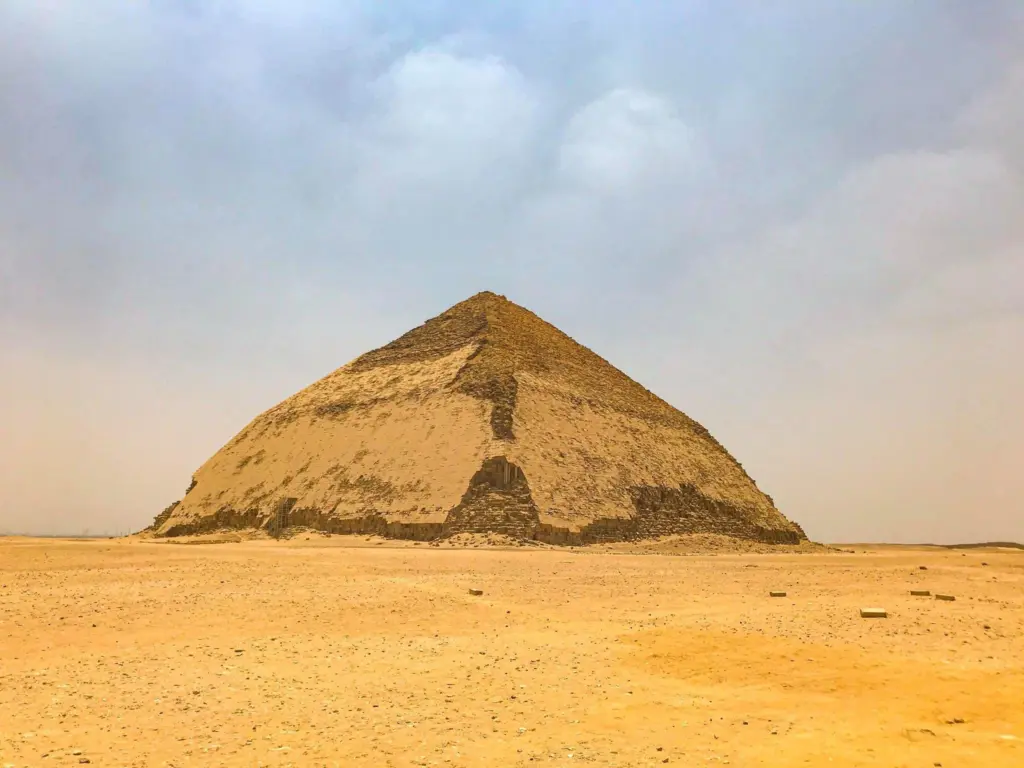
19. Take a Day Trip to Dashur and Saqqara
Just a short drive away lie Dashur and Saqqara, ancient burial grounds that offer a more intimate glimpse into the evolution of pyramid construction and the traditions of the Old Kingdom.
Dashur is home to some of Egypt’s earliest and most iconic pyramids. The Bent Pyramid, with its unique double slope, showcases the trials and innovations of early pyramid construction. Nearby, the Red Pyramid, named for its reddish limestone, stands as Egypt’s first successful attempt at constructing a true smooth-sided pyramid.
Saqqara, on the other hand, is best known for the Step Pyramid of Djoser, the earliest colossal stone structure in Egypt and a precursor to the smooth-sided pyramids of Giza. Built by the legendary architect Imhotep, the pyramid is part of a vast mortuary complex replete with ceremonial structures, temples, and tombs. The site also boasts the Serapeum, a subterranean necropolis where the sacred Apis bulls were interred.
Interested in embarking on this historical journey? Check out my detailed guide on how to make the most of your Day Trip to Dashur.
Alternatively, you can also join a tour that visits Saqqara and Memphis, the old capital of Ancient Egypt.
Where to Stay in Cairo
Cairo with all of its organized chaos offers plenty of accommodation options that cater to every sort of traveler, though I would partially recommend prioritizing safety and comfort when visiting Egypt’s bustling capital. Here are some of recommendations on the best places to stay in Cairo:
Best Hotels in Cairo:
- Steigenberger Hotel El Tahrir – boasts a prime position in El Tahrir Square, directly adjacent to the Egyptian museum and just moments from Khan El Khalili Bazar. Spanning 21,633 sqm, the hotel has 295 lavishly adorned rooms and suites, making it a top choice for both business and social gatherings. Additionally, it offers a range of dining options, a swimming pool, gym, and event facilities.
- Life Pyramids Inn – features amenities like a bar, restaurant, and terrace. With a 24-hour front desk, the inn provides room service, airport transportation, a communal kitchen, and complimentary WiFi. Each guest room comes equipped with air conditioning, a satellite flat-screen TV, a fridge, an electric tea pot, a shower, and storage space. Bed linen and towels are standard in every room.
- Queen Pyramids View Inn – offers a range of amenities including an ATM, a terrace, a 24-hour front desk, airport transportation, and complimentary WiFi throughout. Air-conditioned rooms come equipped with a closet, electric tea pot, fridge, safety deposit box, flat-screen TV, and a private bathroom with a bidet. All rooms come with bed linen and towels. The inn serves a choice of continental, vegetarian, or halal breakfast.
Best Hostels in Cairo:
- Dahab Hostel – emulating the ambiance of a Sinai beach camp, its distinctive rooftop is adorned with whitewashed huts. Within, the hostel exudes a relaxed, cozy atmosphere. Its outdoor garden is perfect for mingling with fellow travelers, enjoying the cool breeze and the undeniable vibe. The rooftop, reminiscent of a Bedouin corner, is a haven for artistic travelers who can bask in the sun, listen to reggae tunes, and indulge in Shisha. The hostel offers free, optimized WiFi throughout the premises.
- Holy Sheet Hostel – huge plus for the name alone. The communal areas are designed for relaxation and socializing, complete with Netflix and a PlayStation 4. Additionally, a fully-equipped communal kitchen is at your disposal anytime. Perks include a 24/7 reception, no curfew, complimentary breakfast from 8-11AM, and free WiFi throughout the hostel. Rooms are air-conditioned, and they also provide services like laundry, free hair dryer usage, and bed linen.
- Madina Hostel – aptly named after the Arabic word for “City”, is a family-run sanctuary established in 2020. Its 21 beds, spread across private and dormitory-style rooms, come equipped with modern amenities such as A/C, soundproof windows, and artwork from local talent. Madina offers complimentary breakfast, a fully-stocked kitchen, tour arrangements, and 24/7 services like airport transfers and reception.

How to Get Around Cairo
Navigating Cairo can seem daunting. However, with a bit of knowledge about its transportation options, moving around the city can be pretty efficient. Here’s a guide to help you traverse Cairo with ease:
-
Public Buses: Cairo’s vast network spans the city. They’re economical, but can be crowded during peak hours. While most buses are older models, there are newer, air-conditioned options available. Familiarity with Arabic or assistance from a local is helpful, as routes are usually displayed in Arabic. I must admit, I tried but ended up lost instead.
-
Microbuses: Smaller vehicles that operate without fixed stops, they’re quicker and can be hailed from the road. Routes are primarily known by locals, and rides can be crowded and fast-paced. Again, I relied on the locals for it. To be honest, I wouldn’t recommend taking the buses if you aren’t familiar with the ara.
-
Cairo Metro: Efficient, clean, and cost-effective, it covers significant parts of the city through three lines, connecting various landmarks and neighborhoods. Be prepared for crowded compartments during rush hours. I had no problems using the Metro and found it to be a neat experience. It’s difficult to use the train as a foreigner when heading to other cities beyond Cairo and I ended up taking the buses to Luxor and Alexandria instead. (Amazing time in Luxor, by the way!)
-
Taxis: Ride-hailing apps like Uber and Careem are your friend here. You can also use the Uber Scooter if you are looking for an even cheaper alternative, Cairo’s roads are really intense though, make sure you wear the helmet. But generally, I found myself using Uber the most, very reliable and with air-conditioning too.
How to Stay Safe in Cairo
Make no mistake, Cairo is a must-visit destination. However, it comes with its set of challenges, especially for the uninitiated. Take it from me, it was the 3rd country I ever backpacked in and I can’t count how many times my naive self got scammed. Here are some essential safety tips to ensure your visit is memorable for all the right reasons:
-
Beware of Scams: Tourist-heavy areas can be rife with scams. Be cautious of overly friendly locals offering unsolicited help or guided tours. Some may claim to work for official tourist organizations, only to lead you to overpriced shops or charge exorbitant fees for their “services”. Here are some of the most common Scams in Egypt you have to watch out for.
-
Street Harassment: Female travelers, in particular, may experience unwanted attention. It’s best to dress modestly, avoiding revealing clothing. While most of these encounters are harmless comments, walk with purpose, avoid prolonged eye contact, and if someone becomes too persistent, firmly state your disinterest.
-
Petty Theft: Crowded markets and tourist spots are prime areas for pickpockets. Keep your belongings secure, use anti-theft bags, and consider wearing a money belt underneath your clothing.
-
Travel at Night: Limit nighttime outings or choose well-lit, busy areas. If you need to travel after dark, always use trusted transportation methods like registered taxis or ride-sharing apps.
-
Stay Updated on Local News: Always be in the loop about the local political and social climate. Protests or gatherings can spring up, and it’s best to steer clear of these areas.
-
Hygiene & Food Safety: Stick to reputable restaurants, and always ensure that your food is well-cooked. Avoid tap water; bottled water is widely available and is the safest bet. Be sure to check that the bottle is still sealed before purchasing!
-
Travel Insurance: Accidents happen, and it’s always best to be prepared. If you’re going to Egypt, I recommend getting travel insurance. Not only does it cover unforeseen medical expenses, but many policies also protect against theft or trip disruptions.
-
Local Customs and Laws: Familiarize yourself with Egyptian customs and laws. This not only ensures you stay out of trouble but also enriches your travel experience.
-
Traffic: Cairo’s traffic is legendary. The driving style can be aggressive, with vehicles almost never yielding to pedestrians. Without much traffic lights or enforcement, crossing the roads of Cairo is something of a rite of passage, just do like the locals do and steel yourself.
Best Time to Visit Cairo
When planning a trip to Cairo, timing is crucial. I went there during summer (I know, I know) and surprise: it was blistering hot to the point where it wasn’t even possible to stay outside. Here’s a guide to help you pick the best time for your visit:
- Fall (October to November): This is one of the best times to visit Cairo. The temperatures are pleasant, and the scorching summer heat starts to wane. Days are warm, while nights can be a bit cooler, making it perfect for sightseeing and outdoor activities.
- Winter (December to February): This is the peak tourist season. The weather is mild and cool, with occasional rain. While daytime temperatures are comfortable, nights can get chilly. It’s advisable to pack some layers. Due to its popularity, major attractions can be crowded, and accommodation prices may rise.
- Spring (March to May): The weather starts warming up, but it’s still bearable. However, be wary of the “khamsin” wind, a dusty and hot wind that can last for days. This phenomenon is more common between March and April.
- Summer (June to September): It’s scorching during these months, with temperatures often exceeding 35°C (95°F). If you opt to visit in summer, schedule outdoor activities during the early morning or late evening to avoid the midday heat.

What to Know Before Going to Cairo
Traveling to Cairo is an exciting journey and to make the most of your trip and avoid common pitfalls, here are some things you should know:
-
Conservative Dress: Egypt, being a predominantly Muslim country, leans towards modesty in clothing. While Cairo is more liberal than some rural areas, it’s still a good idea for travelers, especially women, to dress modestly. For women, this might mean avoiding sleeveless tops, short skirts, or shorts. Men should also refrain from wearing shorts in religious settings.
-
Baksheesh Culture (Tipping): Tipping, or “baksheesh,” is a deep-rooted practice in Egypt. Whether it’s for carrying luggage, guiding you, or even after using a public restroom, small tips are expected. It’s helpful to carry small change for these situations. This was the most difficult thing for me to get used to, but even the locals do it so don’t feel so bad.
-
Friday is a Holy Day: Friday is the Islamic holy day when many shops and restaurants might open later in the day or be closed. Don’t be surprised by the quieter streets in the morning.
-
Call to Prayer: Five times a day, the Muslim call to prayer will reverberate throughout Cairo. This might be surprising, but it’s an integral part of life in Cairo.
-
Toilet Paper: Many public restrooms might not have toilet paper, so it’s a good idea to carry a small pack of tissues with you.
What to Pack for Cairo
Packing right can make your travels in Egypt smoother. Here’s a curated list of items to consider:
Power Adapter: Egypt uses Type C and Type F plug sockets. The standard voltage is 220 V, and the frequency is 50 Hz.
Personal Water Filter or Sterilizing Pen: While bottled water is readily available, having a personal water filter or sterilizing pen can be a lifesaver in situations where clean water is in question.
Medication and First Aid Kit: Over-the-counter medications might differ in Egypt. Bring essential medications, pain relievers, anti-diarrheal pills, and a basic first aid kit. Including oral rehydration salts can be beneficial in case of stomach upsets. When I got sick in Egypt and found it really hard to communicate what I needed in the pharmacy.
Sun Protection: Beyond the basic sunscreen and hat, consider packing UV protective clothing, especially if you plan on being outdoors extensively. Sunglasses and lip balm with SPF can also be invaluable.
Earplugs: The bustling streets of Cairo and the call to prayer can be loud, especially if you’re not accustomed. Earplugs can ensure a good night’s sleep. Either way, I always bring them for the occasional snoring in the hostel.
Plan Your Trip to Egypt | Best Travel Resources
Book Your Accommodations
- Booking.com – the world’s leading online booking platform for accomodations around the world, they have an extensive amount of available listings with zero booking fees and best price guarantees.
- Hostelworld – a backpacker’s best friend, Hostelworld has the largest collection of hostels and guesthouses for affordable prices.
Don’t Forget Insurance
- SafetyWing – from Nomad Insurance, an insurance by nomads for nomads. They understand our lifestyle well and have really comprehensive and flexible plans that cater to any traveler.
Find Cheap Flights
- Kiwi.com – my go-to for booking and finding the cheapest flights and it’s helped me save tons of money. They do virtual interlining which is connecting flights from airlines that do not codeshare, so you can find routes that you wouldn’t be able to find normally.
Join Tours & Activities
- GetYourGuide – is one of the best places to find unique tours and activities. I found that it’s an excellent way to meet fellow travelers and create fond memories. They are not only limited to tours as they also offer niche services such as skip-the-line tickets or private transfers.
Catch a Ride
- Rentalcars.com – nothing beats the freedom of the road, Rentalcars.com is the world’s largest online car rental service. They operate across 160 countries so they’re the perfect partner to work with if you find yourself wanting a ride.

